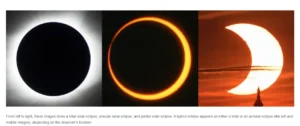Jenu Kuruba Community (Kattunayakkars – King of the forest)
- News: Jenu Kuruba Community in Mysuru got power connection 75 years after independence.
- Jenu Kuruba Community:
-
- The Jenu Kuruba community is a traditional honey gathering tribe.
- It is among the original inhabitants of the forests of the Western Ghats that stretch over Karnataka, Kerala and Tamil Nadu.
- Majority of the Jenu Kurubas are from Karnataka.
- Post 1970s, they were relocated around Nagarhole and Bandipur forests to enable tiger conservation project.
-
Mangal Pandey
- News: Mangal Pandey’s death anniversary celebrated on 8th April.
- Mangal Pandey:

-
-
- He was born on 19 July 1827 in Ballia district of Uttar Pradesh.
- He was part of 34th Bengal Native Infantry (BNI), a regiment under the British India Company’s Army.
- He revolted against the East India Company after they released the cartridges which were reportedly laced with animal fats from cows and pigs. It was offensive to the religious beliefs of Hindus and Muslims of the country.
- In 1857, Mangal Pandey led the revolt against the British which is also known as the first war of Indian Independence or the Sepoy Mutiny of 1857.
- Mangal Pandey attacked two British officers on March 29, 1857. Following this, he was hanged to death on April 8, 1857, in Barrackpore.
- He was only 29 years old when he was executed.
- The revolt started by Mangal Pandey reached other parts of the country and inspired people to fight against the British Empire.
-
UPSC Current Affairs: Education, Economy, Environment, Health & More
Solar Eclipse
- News: On April 8th, 2024, total solar eclipse crossed North America, passing over Mexico, United States, and Canada.
- Eclipse: An eclipse occurs when one heavenly body such as a moon or planet moves into the shadow of another heavenly body.
- Solar Eclipse:
-
- A solar eclipse happens when the Moon passes between the Sun and Earth, casting a shadow on Earth that either fully or partially blocks the Sun’s light in some areas.
- This only happens occasionally, because the Moon doesn’t orbit in the exact same plane as the Sun and Earth do.
- A solar eclipse is witnessed only during the new moon (occurs about 29.5 days) – when the Moon & Sun are aligned on the same side of Earth.
-
| ⮚ During a solar eclipse, the Moon casts two shadows on Earth:
⮚ Umbra: This shadow gets smaller as it reaches Earth. It is the dark center of the Moon’s shadow. People standing in the umbra will see a total eclipse. ⮚ Penumbra: The penumbra gets larger as it reaches Earth. People standing in the penumbra will see a partial eclipse. |
- Types of Solar Eclipse: There are four types of solar eclipses:
-
- Partial solar eclipse: Moon passes between the Sun and Earth but the Sun, Moon, and Earth are not perfectly lined up. Only a part of the Sun will appear to be covered, giving it a crescent shape.
- Annular solar eclipse: When the Moon passes in front of the Sun but is at or near the farthest point from Earth. Here, the periphery of the sun remains visible.
- Total solar eclipse: A total solar eclipse happens when the Moon passes between the Sun and Earth, completely blocking the face of the Sun. People located in the center of the Moon’s shadow when it hits Earth will experience a total eclipse.
- Hybrid solar eclipse: As the Earth’s surface is curved, sometimes an eclipse can shift between annular and total as the Moon’s shadow moves across the globe. This is called a hybrid solar eclipse. Some locations on Earth will witness a total eclipse, whereas other regions will observe an annular eclipse.
-

- Why Is A Total Solar Eclipse So Rare?
-
- While there can be between two and five solar eclipses every year, total eclipses only happen about once every 18 months or so.
- A particular spot on Earth witnesses a total solar eclipse only once in 400 years.
- This is because a total eclipse is only visible if one is standing in the umbral shadow that covers less than 1% of the globe. This is why only very few people will get to see a total eclipse at a time.
-
